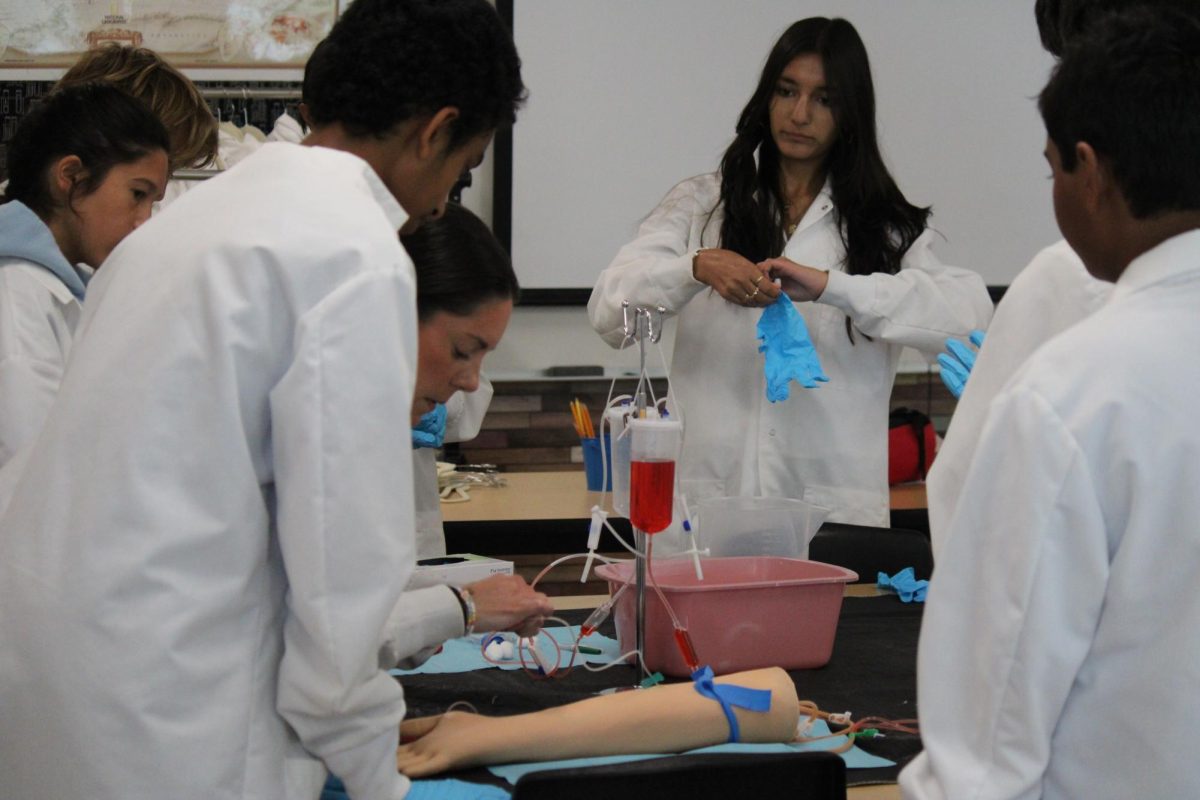State funding for Westview is based on the average daily attendance (ADA) of the 2,146 students currently enrolled at the school. ADA is calculated as the total number of days of student attendance in a given teaching period divided by the total number of days taught. The Poway Unified School District (PUSD) receives $65 each day in which a general-education student attends school, including students on Off-Campus Independent Study (OCIS) contracts and students on full-day field trips.
Students with unexcused absences and those who are excused with a medical note are counted as absent and therefore the school does not receive ADA funds for them. In March, 1,932 absences were recorded during the 20-day teaching period that constituted the month. Beyond ADA, additional funds are allotted for special-needs and English language learner students. Tardiness in the ADA system is cumulative.
During the teaching period of the month of March on any given day, 95.48% of students on average were present at Westview. Each month, that month’s attendance numbers are submitted to the district, which receives $65 per student per school day from the state.
The district allocates funding to the schools based on the enrollment of students. Each school’s enrollment numbers are determined based on data coming from the third week of the school year and then are updated at the end of each month. A school’s initial funding for the coming school year is based on enrollment projections and revised as new students enroll or current ones leave.
During the pandemic, ADA numbers at Westview and elsewhere declined, so the state based ADA funding numbers on pre-pandemic rates because if the district were to receive funding from the state, very little funding would have been provided. This system of basing state funding on pre-pandemic ADA rates is called a hold harmless clause.
The PUSD Director of Finance Antonio Gurrola, who is currently sorting through the $15 million budget deficit for next year, said that funding for the 2020-2024 school year was based on the ADA amounts for the 2019-2020 school year. He explained that this was necessary because statewide attendance rates were so low that districts would not have been able to operate at the level that they had in previous, more adequately funded years with normal levels of attendance.
The hold harmless clause, though, will go out of effect at the start of the 2024-2025 school year, meaning that the amount of funding the district receives will come from our current ADA numbers, not from pre-pandemic ones.
“Now, we’re pretty much calculating based on our actual ADA, which for all districts slightly decreased after COVID,” Gurrola said. “We’re not back at our normal rate of about 97%. We’re teetering at 95%-96%. Since our funding is based on ADA and our enrollment is declining, our [funding] is declining.”
Remillard added that a different fallout from special COVID funding is adding to the current financing crisis.
“Really, why we’re in a bit of this predicament is that the school district received COVID funding that came in, and it was one-time money,” Remillard said. “We spent that one-time money and, because school districts believed that it wouldn’t be one-time money, there continued to be additional funds that would come into school districts because we had a higher need for mental health services, more intervention classes, and opportunities for students after online learning. Many school districts along the way did provide raises to staff and bring in new staffing. So now, without those additional funds, the district offices are having to make some decisions on how to go forward again knowing that that additional money is not coming in.”
In 1998, California voters passed Proposition 98. Prop 98 guarantees a minimum level of funding for schools, guaranteeing that 40% of the state budget will go to funding school districts.
“[Proposition 98] was intended to be the minimum [funding level] but it turned into the [sole] funding amount,” Gurrola said. “The state says, ‘If we have this much ending balance, we’re going to give this certain percentage to school districts.’ We’re in a state where we’re currently not having much growth. So, based on that condition, the districts get a set [lower] amount. It’s intended to fund the minimum amount based on the state’s ending balances when they close their fiscal quarter.”
The shrinking budget is expected to be more acutely felt in upcoming years, so in the district’s annual thought exchange survey, which is meant to gauge community support and brainstorm solutions to various issues, PUSD asked participants for feedback surrounding the budget challenges.
Proposed solutions varied, but the most popular one based on survey participants’ rating of responses was to make employee cuts to highly paid district administration members and reduce the salaries of those administrators as well. This was because some respondents said that they thought the district was too top-heavy and needed to be trimmed.
What remains constant, though, is the uncertainty that the district and state are facing when it comes to funding. Through it all, Remillard said that he believes in the district office’s ability to sort through the unknown future of funding
Currently, Westview has a freshman class of 493 students and a senior class of 603 students. Because Westview receives funding from the district based on enrollment numbers, Westview will likely receive less funding from the district. Due to the small size of our current freshman class and a predicted freshman class of around 500 students next year.
To counteract this, Remillard and his team have been working to increase the size of the freshman class next year to put Westview in a better position for future funding needs. These initiatives include increased coffee talks with parents, a longer three-and-a-half-hour 8th-grade parent night, and weekly campus tours for incoming freshmen. Remillard said the current estimate for the freshman class next year is around 500, a projection that has increased considerably under their efforts.
“We’ve been getting a lot of phone calls from families outside of just our neighborhood who hear the great things that we have going on,” Remilard said. “We’ve been recognized for being one of the best high schools in California, as well as the nation. I think one of the things is we need to do a better job of marketing that. We need to close the gap and increase [our freshman class to more than] 500.”





![Jolie Baylon (12), Stella Phelan (12), Danica Reed (11), and Julianne Diaz (11) [left to right] stunt with clinic participants at halftime, Sept. 5. Sixty elementary- and middle-schoolers performed.](https://wvnexus.org/wp-content/uploads/2025/09/IMG_1948-800x1200.png)
